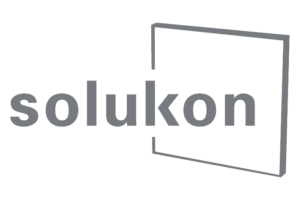Unpacking and depowdering of 3D printed metal parts
Cooperation between Reichenbacher and Solukon combines essential postprocessing steps and enables the first automated box unpacking.
The removal of unfused powder is a central step in the postprocessing of metal parts made using additive manufacturing. For years, market-leader Solukon’s systems have removed powder automatically from parts manufactured with LPBF processes. A project with Reichenbacher Hamuel GmbH is now taking it a step further and automating both unpacking from the container and depowdering in a single system.
After the LPBF process, the printed part is in a kind of “powder cake” of unused metal powder in a container. Unpacking the part, i.e., freeing the part from the powder cake, generally involves vacuuming and clearing away powder. Once the part is uncovered and removed from the container, it is placed in a Solukon system in order to automatically remove any unfused metal powder from the interior of the complex part. Using programmable two-axis rotation and vibration, the powder becomes fluid and can flow out of the interior channels in a controlled manner. This is how the powder is usually removed from complex laser-melted metal parts. The Reichenbacher – Solukon project steps in here, combining the two process steps in an automated system for the first time.
The operating principle of the combined unpacking and depowdering station
It is essential to the Reichenbacher – Solukon project that not the part alone, but rather the entire container in which the part sits is loaded into the SFM-AT1000-S. The Reichenbacher box, which has a removable bottom and sides, is secured via a zero point clamping system, then rotated upside-down, and the first of the loose powder from the powder cake is emptied automatically. Discharged powder is fed directly into an external material preparation station.
Then, the user removes the box frame with an external mobile lifting device or crane, so that the part is fully accessible. The Solukon system (short swivel arm version) then cleans the part as usual using one-of-a-kind SPR technology® with programmable two-axis rotation and adjustable vibration. With the SPR-Pathfinder® software, the motion sequence in the Solukon system can be calculated in advance easily and automatically using the part’s CAD file. The SFM-AT1000-S can accommodate boxes up to 800 kg and, with the help of a high-frequency knocker, can loosen even stubborn powder clumps in the part’s interior channels.


The build box (containing the part and powder) is unloaded from the Reichenbacher printer and loaded into the Solukon system. There, the box as a whole rotates upside-down before depowdering takes place without the box (after removal of the box frame).
“The SFM-AT1000-S with box unpacking is a project with a high degree of automation. Furthermore, it demonstrates how flexibly our systems can be used for individual customer solutions. We are happy to support Reichenbacher in their project unpacking boxes of laser-melted metal parts. This is how, together, we create a real competitive edge for Reichenbacher’s customers,” says Andreas Hartmann, CEO and CTO of Solukon. Together with Reichenbacher’s Additive Manufacturing Team, led by Dr. Alexander Kawalla-Nam, this has led to an industry-ready automation solution in record time. “With Solukon, we once again have a system in our portfolio that has a truly unique selling point and makes us stand out in the area of postprocessing against standard solutions on the AM market. This puts Reichenbacher in a position to map the entire 3D printing process chain. We thank Mr. Hartman and team for their openness and fast execution of the project,” Dr. Kawalla-Nam adds.
The SFM-AT1000-S for combined unpacking and depowdering is now available from Reichenbacher. Solukon is participating as system vendor.
Industrial customer already using combined system
The SFM-AT1000-S has already successfully passed its box unpacking field test. A leading manufacturer of steel molds for the concrete industry has already been using the system for months.

Additional information and details on the operating principle of the new system will follow shortly in an extensive user report.
About the project partners
Reichenbacher Hamuel GmbH is a subsidiary of the SCHERDEL Group and has made a name for themselves globally as a first-class manufacturer of CNC processing centers thanks to their impressive capacity for innovation. At their Dörfles-Esbach location near Coburg, they are developing and manufacturing five-axis systems that live up to the highest safety standards and can also be deployed in the construction of airplanes, automobiles, ships, and rail vehicles, as well as in the woodworking industry, or in the manufacture of aluminum, plastic, or composite parts. Since 2020, Reichenbacher has specialized in large-format and industrial 3D printing systems that encompass the entire process chain in a single system. Specifically, their focus is on the industrialization of the L-PBF (Laser Powder Bed Fusion) process as well as hybridized manufacturing (material extrusion with post-treatment milling). With this, Reichenbacher is breaking the mold in both industrial applications and the AM market with their individualized, customer-oriented solutions.
Solukon Maschinenbau GmbH is a German high-quality supplier of powder removal and processing systems for metal and polymer additive manufacturing. Founded in 2015 by Andreas Hartmann and Dominik Schmid, the company, located in Augsburg, has extensive experience in the development of AM systems and related peripheral equipment, and offers a full range of industrial powder processing systems. Since 2022 Solukon offers an intelligent software for automated depowdering of laser-melted metal parts as exclusive licensee, the SPR-Pathfinder®. Solukon products meet the highest functionality and safety standards and are approved for safe and reliable removal of tough-to-handle and reactive materials such as titanium and aluminum. Solukon has established as a market leader in the field of industrial powder removal with its metal depowdering systems.



Leave a Reply
Want to join the discussion?Feel free to contribute!